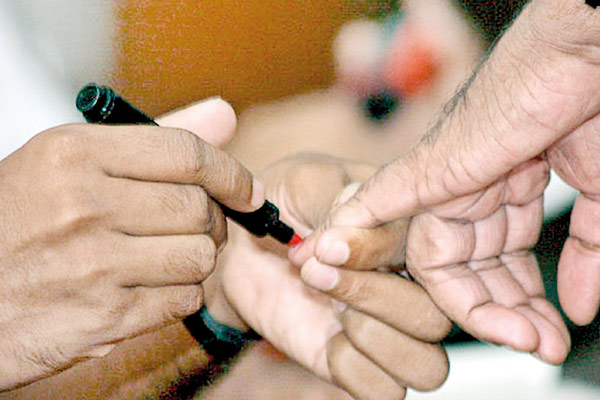Reply To:
Name - Reply Comment

The Pathfinder Foundation in its blueprint on economic reform, ‘Charting the Way Forward: Prosperity for All’, highlighted the following paragraph:
Sri Lanka needs to follow good practice which is being pursued by an increasing number of countries around the world. All handouts, subsidies and other welfare measures included in the manifestos should be costed and specific measures should be identified for financing the incremental costs involved.
This will enable the voters to assess the financial viability of the promises made by various political parties and to make a clean break from the ‘auction of non-existent resources’ which have characterized party manifestos in the past.
The reason for making this a critically important pre-condition is the disconcerting fact that since independence almost all political parties in their election manifestos and political platforms have emphasized their readiness to advocate and give away all sorts of handouts to the public. The costs incurred and sources of financing for such giveaways have never been analysed nor remotely discussed. As a result of this, ordinary citizens have been lulled into believing that all such giveaways have no repercussions or strings attached and will not impose any economic burdens on ourselves or our society.
With the heating up of the parliamentary election campaigns, the major political parties have begun anew to conjure up promises of handouts, subsidies and other concessions. Sadly, this has been the key message of almost all election manifestos since the late 1960s. Such promises and rhetoric have ranged from the ill-advised to the ludicrous and have included for example: a promised handout of eight pounds of free grain per family, bringing down the cost of bread to Rs.3.50 a loaf through elimination of corruption and wastage, increased fertiliser subsidies, the construction of toll-free highways, a Rs.10,000 salary increase for public servants, increased payments to pensioners, Samurdhi recipients and others, and even a promise to import rice from the moon!
What politicians have failed to explain to the public is the fact that all these giveaways will boomerang and result in costing them, the public, dearly in the medium to long-term. For every giveaway there is a trade-off. Citizens and our society at large in one way or the other will be left holding the bag.
Quantifying costs of campaign giveaways
The costs of each election promise needs to be clearly detailed as accurately as possible and such information must be made available to the public. Even then it is important to bear in mind that the costs of any government measure may include many cost components, some of which are easily quantifiable, while others are less directly measurable and apparent. There are always trade-offs and opportunity costs involved in any giveaway.
For example, the cost of the fertilizer subsidy may appear to be easy to quantify. But this is true only if we consider the direct monetary transaction costs. However, the reality is that government interventions can distort resource allocation and markets which in turn may have an immeasurably large cost to the entire economy and the people of this country. The direct cost of an untargeted fertilizer subsidy can be easily calculated based on the import cost of fertilizer. The most difficult task would be to calculate the cost of misallocation of land and labour in the rural sector and the continuation of otherwise unproductive and inefficient production and services. Similarly, when a government generously grants wage or payment increases to public servants or any other recipient, in addition to the direct cost of such giveaways, we need to be aware of the distortions created in the labour market, as well as the impact on the aggregate demand, balance of payments and exchange rate.
Taking such implications into consideration, the Pathfinder Foundation recommends that information in the form of two- or three-tier costing details for the different handouts promised in election manifestos be provided by political parties. At a minimum, political parties should be able to indicate the direct cost to the Government Treasury and the revenue measures which will need to be undertaken to finance the additional cost.
For example, for an election promise to increase public servants salaries by, say, Rs.10,000 per month, we can easily calculate the annual cost of that giveaway to be Rs.10,000 x 1.3 million (the approximate number of public servants) = Rs.13,000,000,000 x 12 months = Rs.156,000,000,000 per annum. Revenue measures to meet additional government expenditure must come from either direct or indirect taxes, which generally have a direct impact on people’s incomes and prices of goods and services, respectively.
Role of media and CSOs
The Pathfinder Foundation highlighted a proposal to include detailed costing of proposed welfare measures in election manifestos in our blueprint on economic reform, ‘Charting the Way Forward: Prosperity for All’, which we are making available to all major political parties because we believe that this is a vital element of sound economic management. In order for this change to come about, others too must make their voices heard.
Therefore, we are asking ordinary citizens, the media and civil society organisations (CSOs) (including Chambers of Commerce and election-monitoring organisations) to take up this call and apply unified and sustained pressure on political parties and their leaders to substantiate their election promises.
(This is Election Campaign Myth Buster published by the Pathfinder Foundation (PF). Readers’ comments are welcome at www.pathfinderfoundation.lk. Previous PF material can be viewed at www.pathfinderfoundation.org)